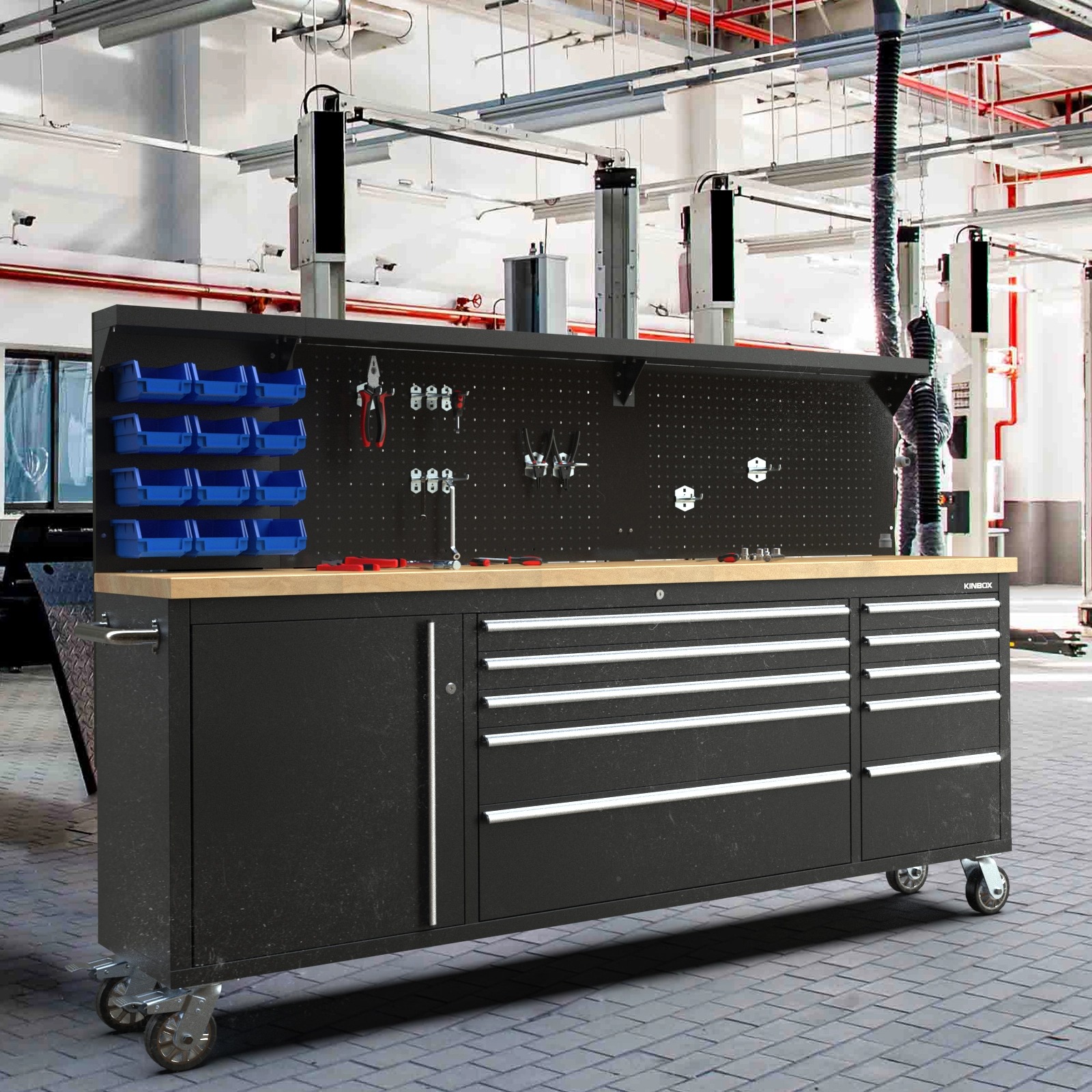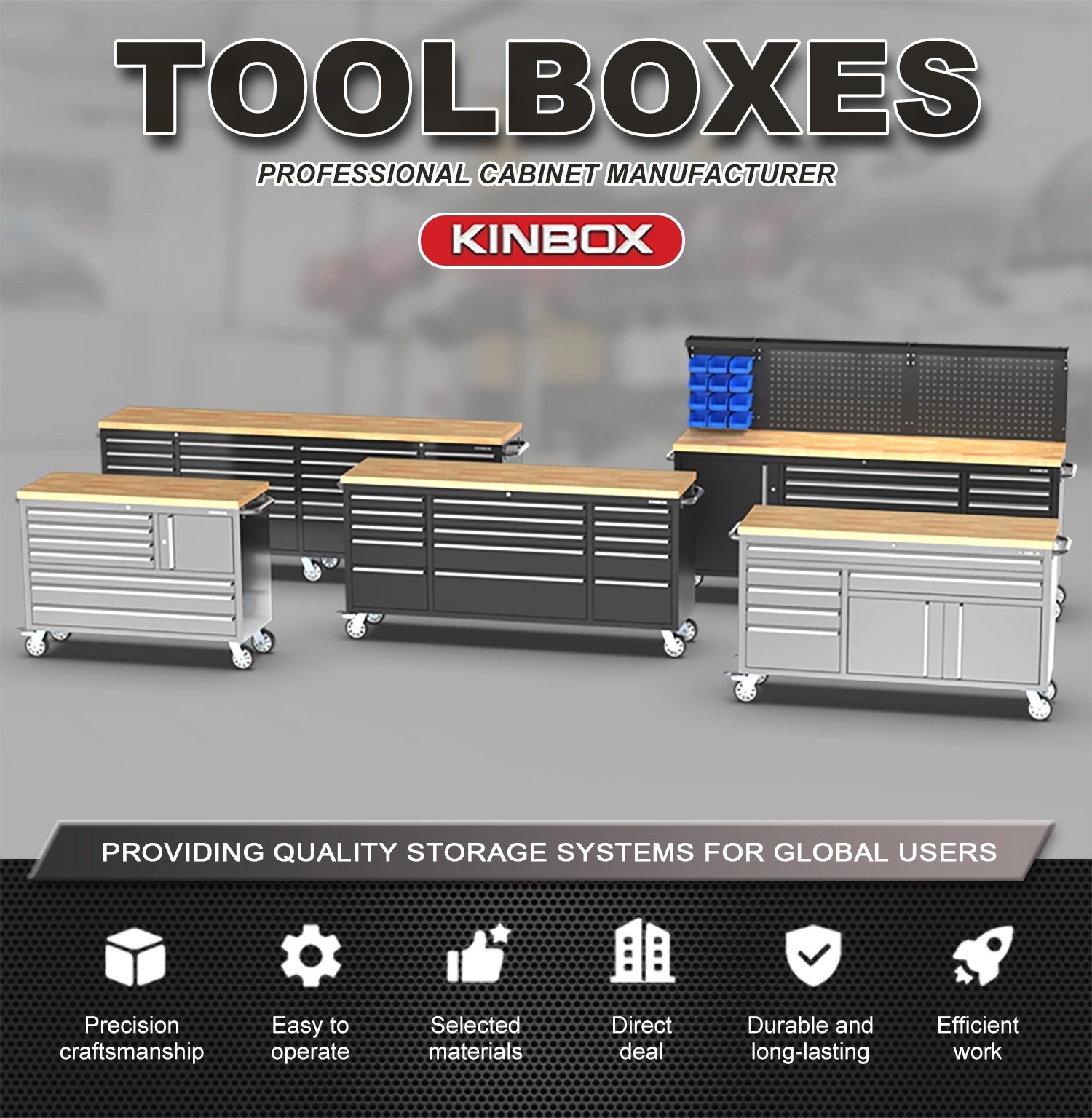

Views: 179 Author: Site Editor Publish Time: 2025-10-29 Origin: Site








Lost or broken tools are among the most common frustrations in workshops, construction sites, and even home garages. The absence of tools hinders the progress of work, and broken ones affect the quality and safety of the products made. Eventually, these issues lead to increased costs, the consumption of time, and the appearance of tension among the workers. The key to overcoming these obstacles is to use an efficient storage solution that not only provides a refuge for the tools but also promotes the flow of work. A Tool Cabinet does just that—the storage is secure, organized, and very efficient and it is designed to prevent loss and damage.
In this complete guide, you will find the ways a Tool Cabinet prevents tool loss and damage, the must-have features, organization tips, and maintenance strategies for long-lasting performance.
A Tool Cabinet is the central point for the storage of all the equipment, thus making sure that every tool gets its own space. This shrinks the chance of having tools left on tables, misplaced in drawers, or lost in the site of work. With a cabinet system, drawers, shelves, and compartments can be labeled and it will be very easy to find out at once if something is missing.
Tool Cabinet is not only the open shelving or simple toolboxes with just storage but it also offers structured organization. The majority of them come with foam inserts or trays that are adjustable and that offer visual cues when a [tool] is missing from its place. In the case of teams, this not only facilitates communication among the helpers but also the rapid detection of misplaced or “borrowed and forgotten” equipment and hence the incidence of loss is reduced. Essentially, the Tool Cabinet changes the entire storage of tools from a chaotic guessing game to a disciplined loss-proof routine.

A Tool Cabinet not only serves as a protective measure against loss but also helps to protect tools from physical damage. Most of the tools that are used in day-to-day life are more or less -precision instruments such as - calipers, torque wrenches, or electrical meters and are prone to damage like scratches, impact, and moisture. If these tools are simply thrown into a box, they will often get in each other's way and might end up being chipped or even broken.
Tool Cabinets come with the following features that allow them to almost completely protect tools from damage:
The tough and durable construction of cabinets protects tools not only from being damaged by impacts but also from rough environments.
Drawers with foam liners or rubber mats are used to absorb vibrations and thus prevent the tools from rattling against each other.
Drawers that can be locked will reduce the unauthorized handling, which usually results in usage or damage that is not proper.
Climate resistance in high-end cabinets keeps away rust or corrosion, particularly in humid areas, thus making them last longer.
By the above-mentioned proper storage of the tools, the lifespan of tools can be extended, performance accuracy can be maintained, and the cost of replacement can be reduced.
Tool Cabinets come in different qualities. To achieve the effective prevention of both loss and damage of the tools, choosing the right model based on your specific requirements is the key. A table listing the essential criteria for the evaluation is given below:
| Evaluation Factor | What to Look For |
|---|---|
| Capacity & Size | Enough drawers to accommodate current tools with room for future additions. |
| Material & Build | Heavy-duty steel construction with rust-resistant coating for durability. |
| Security Features | Locking mechanisms, anti-tip systems, and non-slip drawer liners. |
| Mobility | Sturdy wheels with locking brakes for cabinets that need to be moved around. |
| Modular Design | Expandable drawer systems or interchangeable layouts to adapt to changing needs. |
By evaluating based on these criteria, you can ensure your investment in a Tool Cabinet provides lasting value while solving the exact problems you face with tool storage.
Having a Tool Cabinet is just one part of the whole problem—what you do with it is equally important. In order to get the best from it, you should come up with a method that makes tool control more or less automatic and also more or less infallible.
Steps to set up a storage system along with your Tool Cabinet:
Mark each drawer according to functionality (wrenches, screwdrivers, power tools).
Foam cutouts for tools that are used often so that missing tools can be noticed at once.
Returning policy: making it a rule for the whole workshop to return tools instantly after use.
Digital tracking: for larger teams, use QR codes or barcodes attached to stock control software for check-in/check-out activity.
The systematized tool management not only ensures the tools are not lost but also simplifies the process by decreasing the time spent looking for the equipment.
The way you arrange your Tool Cabinet has an effect that is both direct and indirect on the efficiency and safety of the tools. Just filling the drawers randomly will lead to time wastage and more damaged tools. Therefore, it is better to plan your layout in the following way:
Tools of frequent use: Keep them at the height of the waist for easy access and release the strain of bending or reaching.
Small hand tools: Keep them in shallow drawers with custom foam or dividers to organize and make them visible.
Heavy or bulky tools: Keep at the bottom of the drawers to give support and avoid tipping.
Specialty tools: Keep them in areas where they are very well marked and devoted to this purpose so they will not be mistaken for regular tools.
Your Tool Cabinet will not just serve as a storage area but rather as a productivity enhancer if you respect the principles of ergonomics and design the layout thoughtfully.

One of the most common reasons for accidents in workshops is the presence of loose tools on the benches or the floor. A Tool Cabinet can greatly minimize the risks associated with these.
The main safety advantages of using a Tool Cabinet are:
Firstly, there are no trip hazards as there are no tools left on the floor.
Secondly, lockable drawers prevent access to dangerous tools such as sharp blades or electrical testers.
Thirdly, anti-tip mechanisms keep the cabinet stable even if several drawers are opened at the same time.
Fourthly, well-organized storage guarantees that tools are always returned safely, reducing the risk of injuries caused by misplaced sharp objects.
From a safety viewpoint, a Tool Cabinet is not only a means of storing but also a piece of equipment that protects the workplace.
Some workers are reluctant to spend the money on a Tool Cabinet because of the cost at first, but a cost-benefit analysis rapidly reveals the reason for its being a sound financial decision.
| Category | Without Tool Cabinet | With Tool Cabinet |
|---|---|---|
| Tool Replacement Costs | High due to frequent damage or loss. | Significantly reduced as tools are protected. |
| Time Efficiency | Workers waste time searching for tools. | Tools are always organized and easy to locate. |
| Safety Risks | Higher risk of accidents due to scattered tools. | Reduced risks with secure storage. |
| Long-Term Expenses | Ongoing hidden costs from inefficiency and replacements. | One-time investment yields long-term financial savings. |
When measured over several years, the Tool Cabinet not only pays for itself but also generates savings by minimizing waste and inefficiencies.
It is very important to carry out regular maintenance in order to keep the Tool Cabinet at its best performance. A cabinet that is taken care of properly will give you better protection for your tools and will last for many years.
Maintenance checklist:
Take care of the drawer slides by applying lubricant every couple of months so that they operate smoothly.
Wipe down the surfaces with a dry cloth and a rust preventive solution to clean them regularly.
Have locks and wheels checked from time to time to make sure that they are still secure and working well.
Change the liners if they are worn as their role in protecting the tools is very important.
Investing in a Tool Cabinet implies a long-term relationship where you treat it as your tools and maintain it with the same care.
Workplace challenges of continuous loss and damage of tools can always be solved with the right approach. The Tool Cabinet is not only the storage area but also the main place which guarantees an orderly workflow, a safe place for expensive tools and prevention of safety hazards in the workplace. By making a proper cabinet selection, structuring the storage system, optimizing the layout, and ensuring the proper maintenance of the cabinet, you unavoidably lower the chances of losing tools, eliminating damage, and increasing productivity.
1. What’s the difference between a Tool Cabinet and a regular toolbox?
A toolbox is portable but limited in capacity and durability, while a Tool Cabinet provides structured, large-scale storage with features that prevent loss, damage, and unauthorized access.
2. How do I choose the right size Tool Cabinet?
Assess the number and type of tools you currently own and anticipate future needs. It’s always better to choose a slightly larger cabinet for long-term flexibility.
3. Can I store power tools in a Tool Cabinet?
Yes. Deeper drawers or specialized compartments are designed for power tools. Ensure cords and accessories are stored neatly to avoid wear.
4. How often should I maintain my Tool Cabinet?
Perform light cleaning monthly and more thorough inspections of locks, wheels, and slides quarterly. Replace liners or foam inserts as needed.
5. Is a Tool Cabinet worth the investment for small home garages?
Absolutely. Even in small setups, a Tool Cabinet keeps tools organized, prevents accidental damage, and saves time during projects—making it just as valuable for DIYers as for professionals.





